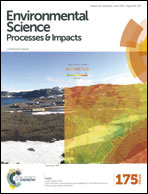Nano-hydroxyapatite alleviates the detrimental effects of heavy metals on plant growth and soil microbes in e-waste-contaminated soil
Abstract
The crude recycling activities of e-waste have led to the severe and complex contamination of e-waste workshop topsoil (0–10 cm) by heavy metals. After nano-hydroxyapatite (NHAp) application in June 2013, plant and soil samples were obtained in November 2013, December 2013, March 2014 and June 2014. The results showed that NHAp effectively reduced the concentration of CaCl2-extractable Pb, Cu, Cd, and Zn in the topsoil and significantly reduced the metal content in ryegrass and also increased the plant biomass compared with that of the control. Moreover, the concentrations of CaCl2-extractable metals in the soil decreased with increasing NHAp. NHAp application also increased the activities of soil urease, phosphatase and dehydrogenase. Moreover, the soil bacterial diversity and community structure were also altered after NHAp application. Particularly, Stenotrophomonas sp. and Bacteroides percentages were increased. Our work proves that NHAp application can alleviate the detrimental effects of heavy metals on plants grown in e-waste-contaminated soil and soil enzyme activities, as well as soil microbial diversity.


 Please wait while we load your content...
Please wait while we load your content...